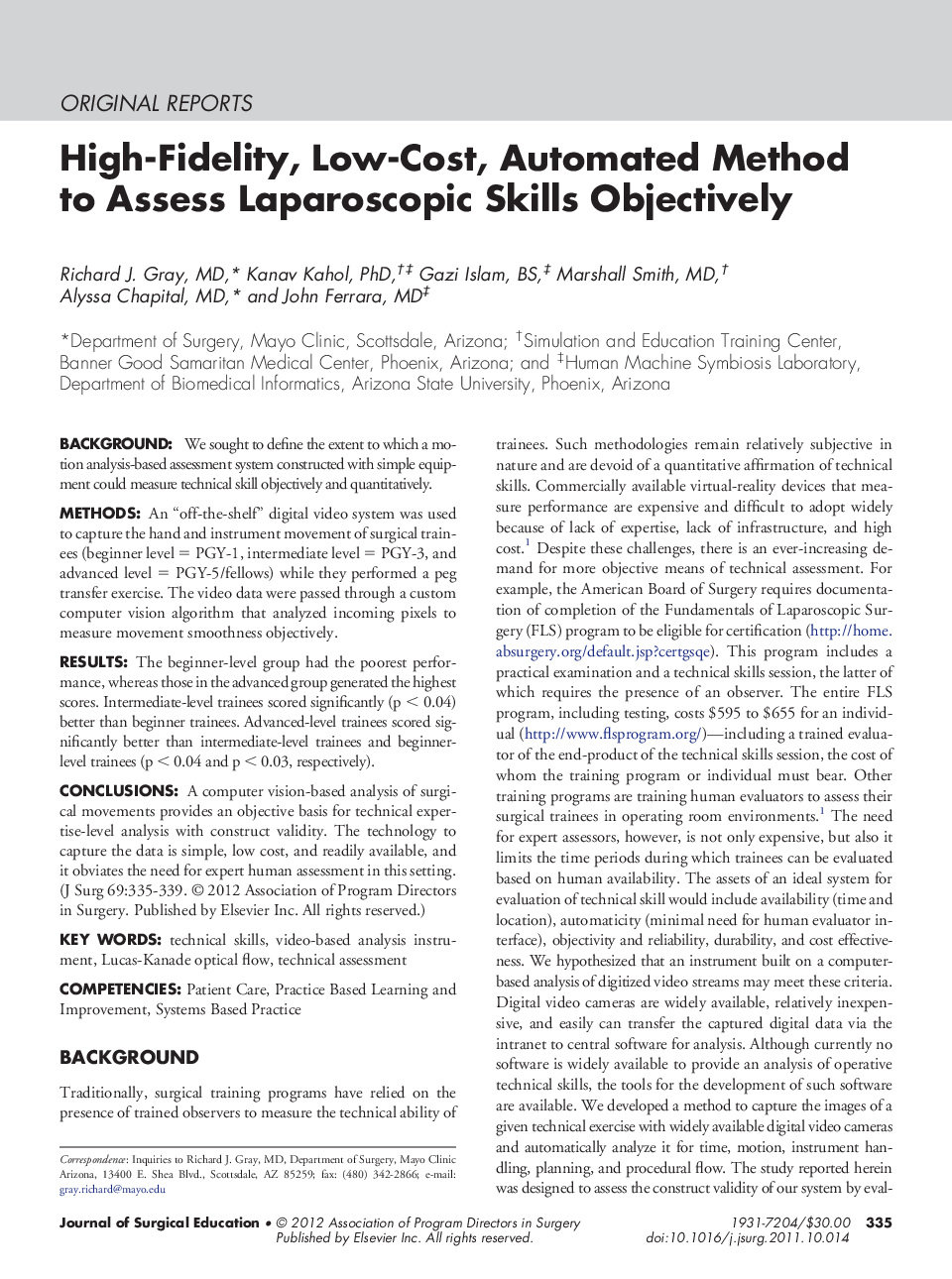| Article ID | Journal | Published Year | Pages | File Type |
|---|---|---|---|---|
| 4298525 | Journal of Surgical Education | 2012 | 5 Pages |
BackgroundWe sought to define the extent to which a motion analysis-based assessment system constructed with simple equipment could measure technical skill objectively and quantitatively.MethodsAn “off-the-shelf” digital video system was used to capture the hand and instrument movement of surgical trainees (beginner level = PGY-1, intermediate level = PGY-3, and advanced level = PGY-5/fellows) while they performed a peg transfer exercise. The video data were passed through a custom computer vision algorithm that analyzed incoming pixels to measure movement smoothness objectively.ResultsThe beginner-level group had the poorest performance, whereas those in the advanced group generated the highest scores. Intermediate-level trainees scored significantly (p < 0.04) better than beginner trainees. Advanced-level trainees scored significantly better than intermediate-level trainees and beginner-level trainees (p < 0.04 and p < 0.03, respectively).ConclusionsA computer vision-based analysis of surgical movements provides an objective basis for technical expertise-level analysis with construct validity. The technology to capture the data is simple, low cost, and readily available, and it obviates the need for expert human assessment in this setting.
